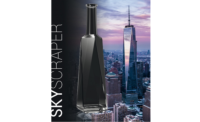Converted Flexible Packaging Market; 14th Edition
Transitions from Rigid Packaging & Use of High-Value Products Drive Gains for Converted Flexible Packaging
US demand for converted flexible packaging is expected to rise 3.2% per year to $21.7 billion in 2021. Increases will be based on sustained demand for flexible packaging that can replace traditional rigid formats and provide improved source reduction, storage efficiency, and marketability. Additionally, use of high-performance materials and convenience features will aid gains in volume terms as these additions make flexible formats more competitive with rigid packages in more demanding applications.
Pouches Will Continue to Show the Fastest Gains
Pouches will benefit from continued transitions to pouches from rigid packaging formats and trends that favor high-performance pouches over commodity types. Most of the gains for pouches will be the result of greater use of stand-up pouches for the packaging of snacks, baked goods, and pourable materials like beverages, soaps, sauces and condiments, and baby food. Stand-up pouches provide enhanced product differentiation along with other advantages such as resealability and amenability to dispensing fitments that help these products gain share over rigid alternatives such as cartons, bottles, and cans.
Food Markets Will Continue to Hold the Largest Share of Total Demand
Many food products are packaged in flexible formats due to the small average packaged volume and cost sensitivity of food manufacturers. Lightweight bags and pouches see widespread use in the unit packaging of meat and poultry, baked goods, snacks, candy, pet foods, and frozen food. Growth has been based on the ability to provide improved, cost-effective methods of protecting food from contamination while enhancing its shelf life and visual appeal. Improvements in reclosing features will continue to enhance prospects for bags and pouches versus rigid containers in most food markets.
Demographic & Lifestyle Factors Will Also Drive Gains for Flexible Packaging
A number of demographic and lifestyle factors will also strengthen demand, including shrinking household sizes, the rise of dual-income families, and the trend of snacking in place of traditional meals, all of which will promote demand for pouches in small or single-use sizes. Despite widespread interest in food, consumers generally do not want to spend time preparing meals from scratch, instead opting for foods that offer convenience and quick preparation. At the same time, there is a move toward fresh and minimally processed foods rather than traditional center store packaged food products. This latter factor will restrain growth for converted flexible packaging in some markets, as will competition from rigid single-serving formats such as cups and small trays.
Study Coverage
This industry study presents historical demand data (2006, 2011, and 2016) and forecasts (2021) by product (bags; pouches; wraps; wrappers strip packs), market (meat, poultry, & seafood; baked goods; snack foods; produce; candy & confections; pet food; dairy products; frozen food; beverages; grain mill products; pharmaceutical; medical products; agricultural & horticultural products; chemicals; paper & textile products; rack & counter products; building materials; health & beauty aids), and material (plastic film; paper; aluminum foil). The study also evaluated company market share and competitive analysis on industry competitors including Amcor, American Packaging Corporation, Bemis, Berry Global, Bryce, Coveris, Hood Packaging, Mondi Group, Printpack, ProAmpac, Sealed Air, Sigma Plastics, Sonoco Products, and Winpak.
Published: May 2017
Format: PDF emailed by publisher
Number of Pages: 221
Price: $5,300 Individual License
$7,900 Corporate License
Individual pages or sections also available
For more information and to order, Click Here
The Freedonia Group, Inc. is a leading international industry market research company that provides information and analysis needed to make informed strategic decisions for your business. Freedonia’s industry market research on Packaging covers a broad range of packaging materials (e.g., paper, plastic, metal) and applications (e.g., protective packaging, food containers). In each case various factors affecting demand are considered such as renewability, life style, distribution, end use product demand and other related issues. All studies include market size, forecasts, product and market segmentations, related economic indicator and regulatory analysis, market share estimates, a discussion of industry structure, and profiles of the leading companies.
Looking for a reprint of this article?
From high-res PDFs to custom plaques, order your copy today!







